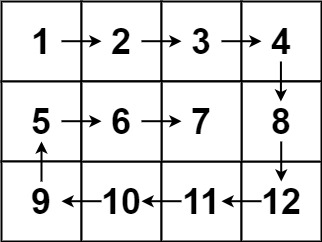一、扩展运算符的应用
🍔ES6通过扩展元素符…,好比 rest 参数的逆运算,将一个数组转为用逗号分隔的参数序列
参数序列
console.log(...[1,2,3]) // 1 2 3
console.log(1,...[2,3,4],5) // 1 2 3 4 5
[...document.querySelectorAll('div')]
// [<div>,<div>,<div>]
主要用于函数调用的时候,将一个数组变为参数序列
function add(x,y){return x + y;
}
const numbers = [4,2];
add(...numbers);// 6
还可以将某些数据结构转为数组
[...document.querySelectorAll('div')]
另外能够更简单的实现数组复制
const a1 = [1,2];
const [...a2] = a1;
让数组的合并更为简洁了
const arr1 = ['a','b'];
const arr2 = ['c'];
const arr3 = ['d','e'];
[...arr1,...arr2,...arr3]
//['a','b','c','d','e']
注意:通过扩展运算符实现的是浅拷贝,也就意味着修改了引用指向的值,会同步反映到新数组
例如:
const arr1 = [[3,4],[5,6]];
const arr2 = [...arr1];
console.log(arr1 ===arr2)
arr1[0][0] = 9999 // 修改arr1里面数组成员值
console.log(arr1)
console.log(arr2)
扩展运算符可以与解构赋值结合起来,用于生成数组
const [first,...rest] = [1, 2, 3, 4, 5];
first // 1
rest // [ 2, 3, 4, 5]
const [first,...rest] = [];
first // undefined
rest // []
const [first,...rest] = ["foo"];
first // "foo"
rest // []
如果将扩展运算符用于数组赋值,只能放在参数的最后一位,否则会报错
可以将字符串转为真正的数组
[...'world']
// ['w','o','r','l','d']
定义了遍历器(Iterator)接口的对象,都可以用扩展运算符转为真正的数组
let nodeList = document.querySelecttorAll('div');
let array = [...nodeList];
let map = new Map([[1,'ls'],[2,'zs'],[3,'ww']
]);
let arr = [...map.keys()];
console.log(arr)
二、构造函数新增的方法
🍟🍟🍟
关于构造函数,数组新增的方法有如下:
- Array.from()
- Array.of()
Array.from()
将类似数组的对象和可遍历的对象转为真正的数组
let arrayLike = {"0":"a","1":"b","2":"c",length:3
};
let arr2 = Array.from(arrayLike);// ['a','b','c']
还可以接受第二个参数,用来对每个元素进行处理,将处理后的值放入返回的数组
Array.from(['a','b','c'],(x)=> x * x)
Array.of()
用于将一组值,转换为数组
Array.of(‘li’,‘zs’,‘sh’)
没有参数的时候,返回一个空数组
当参数只有一个的时候,实际上是指定数组的长度
参数个数不少于2个时,Array()才会返回由参数组成的新数组
Array()
Array(3)
Array(3,11,8)
三、实例对象新增的方法
关于数组实例对象新增的方法有如下:
- copyWithin()
- find()、findIndex()
- fill()
- entries()、keys()、values()
- includes()
- flat(),flatMap()
copyWithin()
将指定位置的成员复制到其他位置(会覆盖原有成员),然后返回当前数组
参数如下:
- target(必需):从该位置开始替换数据。如果为负值,表示倒数
- start(可选):从该位置开始读取数据,默认为 0。如果为负值,表示从末尾开始计算。
- end(可选):到该位置前停止读取数据,默认等于数组长度。如果为负值,表示从末尾开始计算。
[1, 2, 3, 4, 5].copyWithin(0,3)// 将从 3 号位直到数组结束的成员(4 和 5),复制到从 0 号位开始的位置,结果覆盖了原来的 1 和 2
// [4,5,3,4,5]
find()、findIndex()
find() 用于找出第一个符合条件的数组成员
参数是一个回调函数,接受三个参数依次为当前的值、当前的位置和原数组
[15,23,24,52,32].find(function(value,index,arr){return value <50
})
findIndex() 返回第一个符合条件的数组成员的位置,如果所有成员都不符合条件,则返回 -1
[15,23,24,52,32].findIndex(function(value,index,arr){return value <50
})
这两个方法都可以接受第二个参数,用来绑定回调函数的this对象。
function f(v){return v > this.age;
}
let person = {name:"zs",age:24};
[15,23,24,52,32].find(f,person);
fill()
使用给定值,填充一个数组
[15,23,24,52,32].fill(7)
还可以接受第二个和第三个参数,用于指定填充的起始位置和结束位置
['a', 'b', 'c'].fill(7, 1, 2)
// ['a', 7, 'c']
注意,如果填充的类型为对象,则是浅拷贝
entries(),keys(),values()
keys() 是对键名的遍历、values()是对键值的遍历、entries()是对键值对的遍历
for(let index of ['a','b'].keys()){console.log(index);
}
for(let elem of ['a','b'].values()){console.log(elem);
}
for(let [index,elem] of ['a','b'].entries()){console.log(index,elem)
}
includes()
用于判断数组是否包含给定的值
[1, 2, 3].includes(2)
方法的第二个参数表示搜索的起始位置,默认为0
参数为负数则表示倒数的位置
flat(),flatMap()
将数组扁平化处理,返回一个新数组,对原数据没有影响
[1,2,[5,7]].flat()
flat()默认只会“拉平”一层,如果想要“拉平”多层的嵌套数组,可以将flat()方法的参数写成一个整数,表示想要拉平的层数,默认为1
[1, 2, [3, [4, 5]]].flat()
// [1, 2, 3, [4, 5]][1, 2, [3, [4, 5]]].flat(2)
// [1, 2, 3, 4, 5]
flatMap()方法对原数组的每个成员执行一个函数相当于执行Array.prototype.map(),然后对返回值组成的数组执行flat()方法。该方法返回一个新数组,不改变原数组
// 相当于 [[2, 4], [3, 6], [4, 8]].flat()
[2, 3, 4].flatMap((x) => [x, x * 2])
// [2, 4, 3, 6, 4, 8]
四、数组的空位
数组的空位,指数组的某一个位置没有任何值
ES6 则是明确将空位转为undefined,包括Array.from、扩展运算符、copyWithin()、fill()、entries()、keys()、values()、find()和findIndex()
五、排序稳定性
将sort()默认设置为稳定的排序算法
const arr = ['peach','straw','apple','spork'
];const stableSorting = (s1, s2) => {if (s1[0] < s2[0]) return -1;return 1;
};arr.sort(stableSorting)
// ["apple", "peach", "straw", "spork"]
排序结果中,straw在spork的前面,跟原始顺序一致







